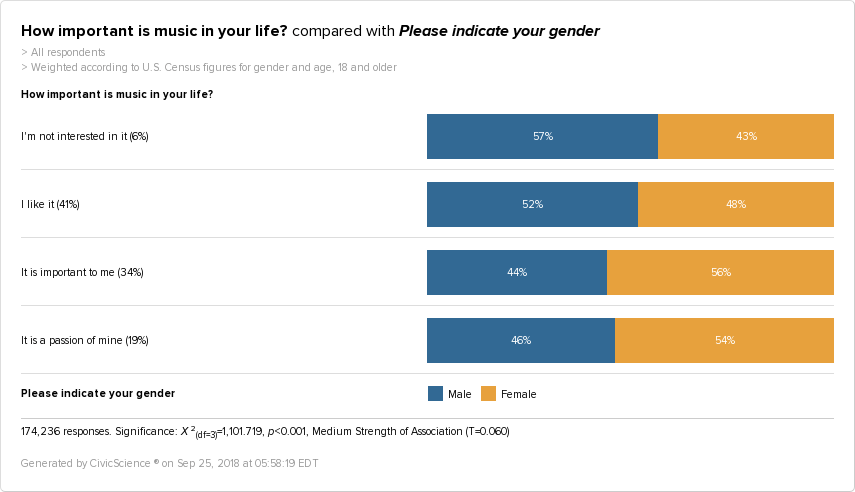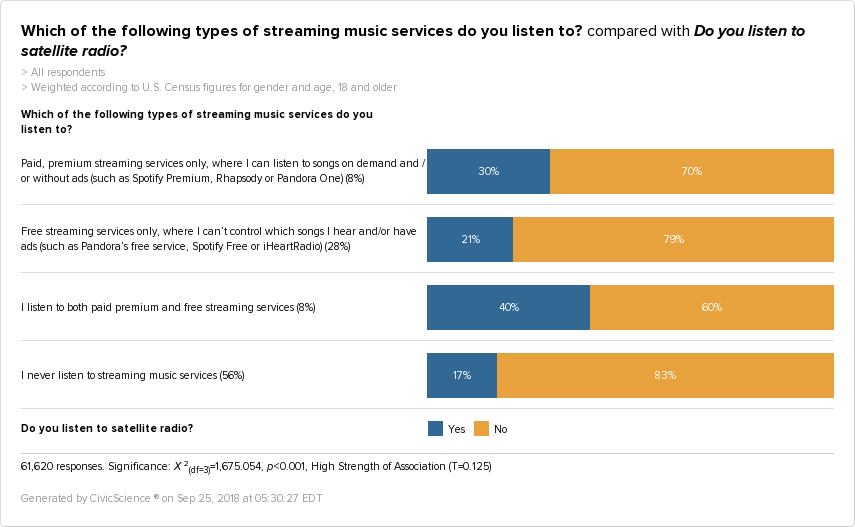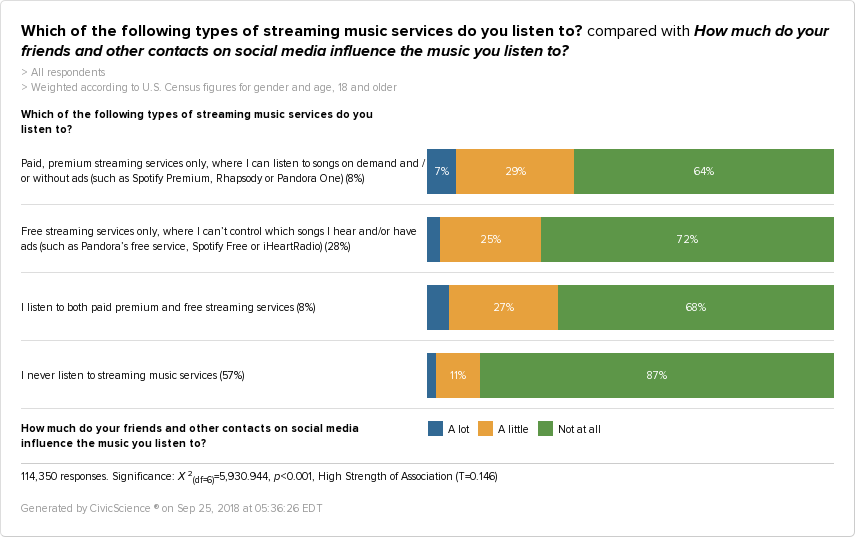This week, SiriusXM purchased online streaming service Pandora in a $3.5 billion deal that further heightened discussions regarding subscription vs. free streaming services. CivicScience asked over 397,000 US adults since 2015 about their experience with all types of music streaming services; both paid streaming services and free ones.
According to the data, 31% of those who listen to streaming music opt for free services only. In most cases, the biggest difference between a paid, premium streaming service and a free one is the listener’s ability to control what is played, as well as the presence of advertisements.
However, the use of paid streaming services has been slowly growing among consumers in the past two years. The percentage of Americans who listen to a paid streaming music service (the blue line + the green line) has risen from 17% to 25% since 2016.
Of those who prefer paid, premium streaming, men make up 53%. Women, however, are the majority in the remaining categories.
Why are men more likely to pay for a streaming subscription? There are a variety of reasons this could be the case. Passion for music, however, is not one of them, as men are far more likely to say they are not interested in music than to hold it in high regard.
While gender may play a role in the decision to pay for a music streaming service, income may not. Of those who pay for premium subscriptions only, the respondents are fairly evenly split across all three income levels. Of course, it comes as no surprise that low-income earners are 42% of those who listen to free streaming services only. But, the statistics on those who are paying for their music indicate that money may not be as much of a barrier to entry.
Age is one factor that the data indicates as playing a potentially major role in the decision to pay for music streaming services. Millennials make up 49% of respondents who listen to paid streaming services only. This information echoes the data above, suggesting that even those who are earning arguably the least amount of money each year may choose to pay for more convenient, ad-free music.
As it turns out, those who use paid, premium services are also the most likely to say they never unplug from their devices.
The issue of never being without one’s technology has, for some, turned into a habit that is difficult to break. Paid streaming service listeners readily admit that they may be addicted to their technology, with 33% indicating as such.
Companies seeking to target potential customers, then, should have no problem drawing in an attentive crowd, especially through digital mediums.
In light of the SiriusXM deal, how do satellite radio listeners fit into this equation? In fact, those who listen to both premium and free services also happen to be the largest group of satellite radio listeners.
Those who consider music a passion are slightly more likely to be interested in having premium subscriptions. This isn’t necessarily surprising but does confirm that serious music lovers may consider a subscription streaming service a worthy investment.
One factor that can unite listeners of all stripes is social media. Although those with subscription streaming services are especially influenced by contacts on social media, the data indicates that these platforms play a role in everyone’s life, to some degree.
Ultimately, paid music streaming subscriptions are poised for even more potential growth but haven’t surpassed the convenience of free streaming options just yet. Given the high level of interest from Millennials and those who are especially tech addicted, a growing number of serious music lovers may become more inclined to have a more customized listening experience in the future.



















